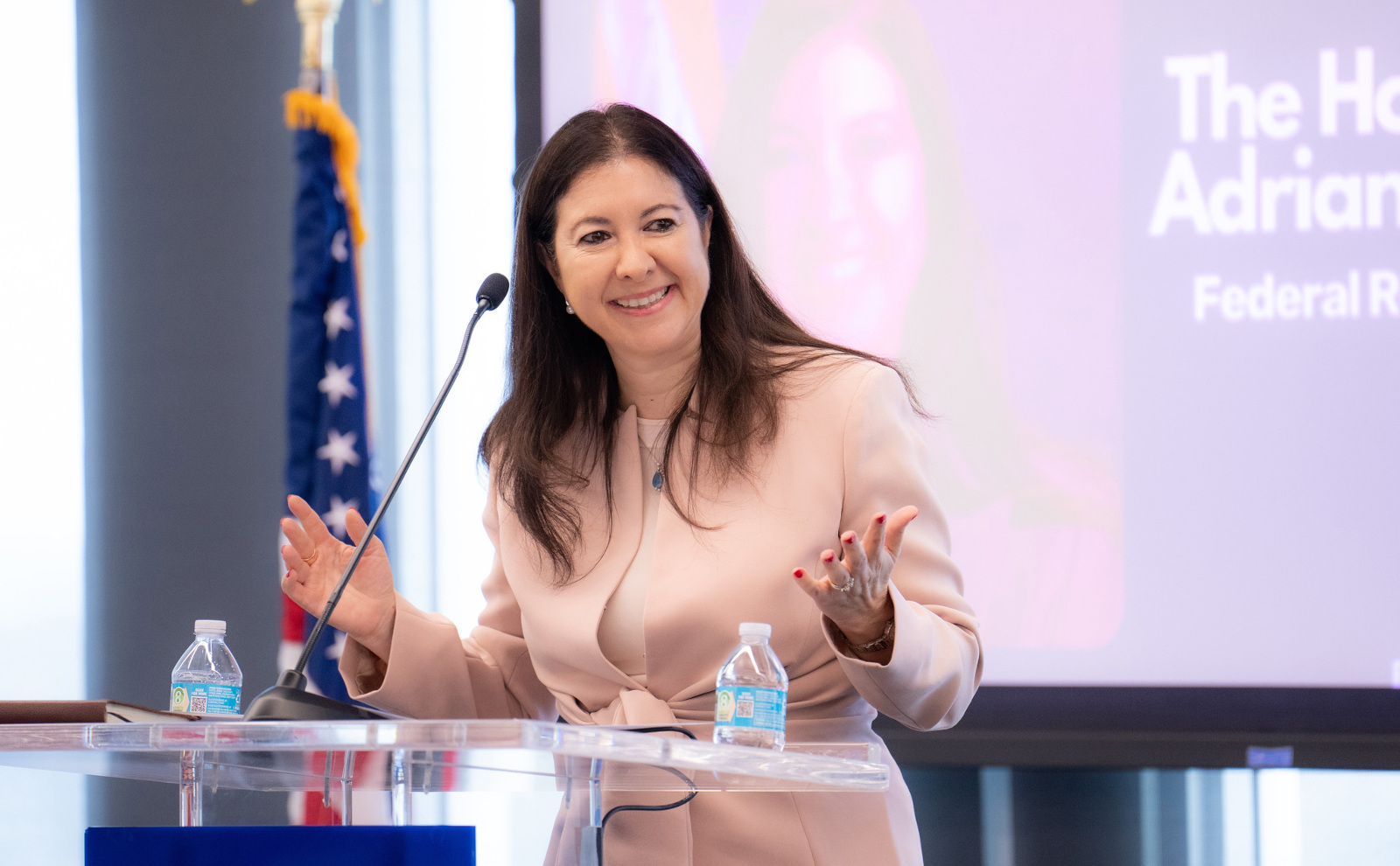Fed governor cites automotive amid cautious look at economy

Fed Governor Adriana Kugler is pictured giving a keynote speech at the Miami Economic Forum on Feb. 7. Image courtesy of the Federal Reserve.
By subscribing, you agree to receive communications from Auto Remarketing and our partners in accordance with our Privacy Policy. We may share your information with select partners and sponsors who may contact you about their products and services. You may unsubscribe at any time.
Federal Reserve governor Adriana Kugler gave a speech on Monday at the International Economic Symposium, cohosted by the National Association for Business Economics and the Central Bank of Ireland.
Kugler offered several reasons why the U.S. economy isn’t exactly dancing a jig nowadays, referencing automotive to support her analysis.
Kugler told attendees at the event in Dublin, “While the latest data show a resilient economy, I expect growth this year to be slower than last.”
The Fed official then detailed what policymakers are hearing from businesses like dealerships and auto finance companies.
“The Federal Reserve’s April Beige Book and conversations with contacts also point toward front-loading in auto sales or other high-end goods,” Kugler said. “However, the Beige Book and various indicators of consumer and business confidence also point to a downbeat tone about underlying economic activity down the road.
“For instance, the Beige Book notes that several districts see a deterioration in demand for travel and other nonfinancial services and indicates that businesses may put investments on hold moving forward. Several other economic indicators that I track suggest some signs of declining economic activity in the future,” she continued.
Subscribe to Auto Remarketing to stay informed and stay ahead.
By subscribing, you agree to receive communications from Auto Remarketing and our partners in accordance with our Privacy Policy. We may share your information with select partners and sponsors who may contact you about their products and services. You may unsubscribe at any time.
Moving on to inflation, Kugler explained how she monitors that important trend by using another connection to automotive.
“To help me judge the path of future inflation, I pay careful attention to two subcategories of the index. One is core goods prices, which exclude volatile food and energy prices. The second is non-housing market-based services, which are based on transactions such as car maintenance and haircuts, not imputed prices,” Kugler said in Ireland.
“Goods inflation was negative for most of 2024 — as was the norm for several years before the pandemic — but it was positive early this year,” she continued. “In contrast, non-housing market services inflation stayed elevated through March, coming in at 3.4 percent. That category often provides a good signal of inflationary pressures across all non-housing services.
“Looking ahead, I find it critical to monitor not only the most up-to-date data but also the changing economic policies around the world,” Kugler went on to say.
Perhaps to show Kugler wasn’t influenced by eating too much shepherd’s pie during the appearance overseas, Comerica Bank chief economist Bill Adams and senior economist Waran Bhahirethan also discussed inflation expectations on Monday, taking a bit of an upbeat tone.
“Inflation looks likely to pick up in the second half of 2025 as businesses pass on the cost of tariffs. But since tariffs now seem likely to settle at much lower levels than were effective a week or two ago, their effect on inflation will be smaller, too,” Adams and Bhahirethan said.
“Also, even if the prices of imported goods rise faster, inflation of many domestically-produced goods and services is moderating — this includes gasoline, rent, and many grocery prices,” they continued. “On balance, price pressures from tariffs will probably be manageable for most businesses and consumers in 2025.
“Consumer surveys showed a lot of concern about inflation from tariffs in the last few months, and there are signs that discretionary spending on services softened in April. But after the recent rollback of tariffs, consumer sentiment seems likely to stabilize,” Adams and Bhahirethan went on to say.
Kugler wrapped up her appearance in Ireland by reiterating similar approaches mentioned by Fed chair Jerome Powell last week when policymakers left interest rates at current levels. The Fed has its next opportunity to make an adjustment on June 18.
“To summarize, the U.S. economy has remained resilient up until now, with a still-stable labor market. Meanwhile, the disinflationary process has slowed. This comes against a backdrop of heightened uncertainty as households, businesses, and, indeed, monetary policymakers process the changes to economic policies that are happening around the world,” Kugler said.
“Going forward, I will continue to closely monitor the direct effects of global economic policies on prices and employment, as well as the indirect economic effects from uncertainty, inflation expectations, and productivity,” she went on to say.


